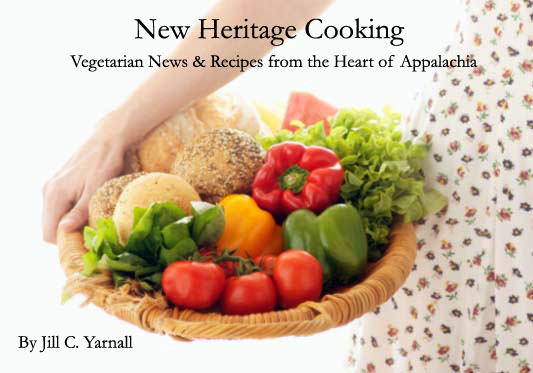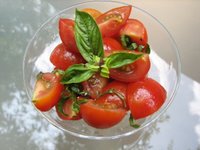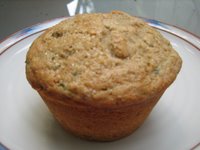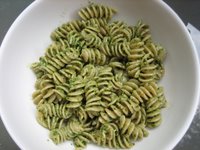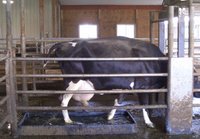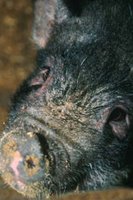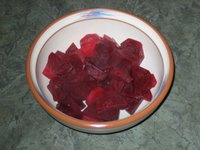
Newswise (07/10/06) — A team of researchers has shown for the first time that laboratory mice infected with the agent of scrapie -a brain-wasting disease of sheep-demonstrate high levels of the scrapie agent in their heart 300 days after being infected in the brain.
These findings raise the possibility that heart infection could be a new aspect of prion diseases, including those that affect humans and livestock, and that these diseases could travel through the blood.
The paper wass being published on Friday, July 7 in an advanced, online edition of the journal Science.
Prion diseases-also known as transmissible spongiform encephalopathies because of the sponge-like holes created in the brain-include scrapie in sheep, mad cow disease in cattle, chronic wasting disease in deer and elk, and new variant Creutzfeldt-Jacob disease in humans. These diseases are unusual because unlike other infectious diseases, prion diseases appear to be transmitted by a protein, specifically a misfolded form of a normal cellular protein, the prion.
"Until now, prion disease has been thought of as a chronic neurological condition," says Scripps Research Professor Michael B. Oldstone, M.D., who led the research. "Our study has shown, however, that it can have other manifestations, therefore expanding the types of conditions it could cause."
In the newly reported study, investigators at Scripps Research found infectious misfolded prion protein in heart muscle. Although several types of protein are known to form heart amyloid, this is the first time prion protein amyloid in heart tissue has been identified. Only misfolded prion proteins are infectious.
After making this surprising finding, Scripps Research investigators secured the help of Kirk Knowlton, M.D., chief of the division of cardiology at the University of California, San Diego, who investigated the effect of prion protein amyloid on mouse heart function, discovering that it decreased the heart’s ability to pump blood.
Significantly, unusually high levels of scrapie infectivity were also identified in the blood of the same mice used in the heart study. "This is the first system in which prion disease agents were found reproducibly and reliably at high titers in the blood," notes Oldstone.
In the future, this finding could help scientists answer basic questions such as how prions travel in the bloodstream, as well as develop such important applications as a blood-based diagnostic test to identify brain-wasting diseases and possibly a way to filter or chemically treat blood to remove any infectious prion disease agents. Currently, in the United States individuals who lived in the United Kingdom for three months or more during the outbreak of mad cow disease from 1980 to 1996 are asked not to donate blood. In the United Kingdom, only individuals born after the outbreak may donate.
The new research will also provide scientists with an animal model in which to study heart amyloidosis, a family of heart diseases that affect humans. Amyloidoses involve waxy protein deposits that stiffen the heart, limit its pumping ability, and typically lead to fatal heart stoppage.
"Undoubtedly, this work will enable scientists to pursue new theories about the effects of these deadly brain wasting diseases," says NIH Director Elias A. Zerhouni, M.D. "The implications of this research could be vital to our efforts to slow or stop these diseases."
The new research follows last year’s finding from the Oldstone group in collaboration with Bruce Chesebro, M.D., at the NIH’s Rocky Mountain Laboratories, which suggested a specific part of the prion protein is essential for the pathogenesis of prion diseases (Science (308 (5727):1435-39 (2005)). In this study, the investigators engineered scrapie-infected mice without an "anchor"-specifically the glycophosphoinositol anchor, a stretch of amino acids at the COOH end of the protein-between the membrane of cells and the prion protein. By taking off this anchor, the researchers showed that the prion protein still folded but was no longer able to attach in normal amounts onto the surface of cells. In contrast to scrapie-infected wild mice, which typically die after about 150 days, the engineered mice regularly lived for more than 600 days with minimal symptoms, ultimately dying of old age.
In prion diseases, the normal form of the prion protein is converted into an abnormal, misfolded form. Disease occurs because these abnormal proteins have the ability to convert normal prion proteins into the abnormal form. Like bad apples spoiling the lot, the infectious prions will multiply, and their insolubility will lead to their aggregation and the formation of plaques, which can interfere with normal function in the brain.
Of the prion diseases, most in the news has been bovine spongiform encephalopathy, or mad cow disease, which has caused widespread public concern over the last two decades after it has appeared primarily in cattle in England but also in other countries in Europe, Canada, and the United States. Perhaps the number one reason why a disease that infects cows is of such concern to world governments is that scientists believe that the disease can be transmitted across species through the consumption of tainted meat from a diseased animal's central nervous system. The first major outbreak of mad cow disease in Britain is believed to have originated with the now outlawed practice of feeding cattle meat and bone meal derived from other slaughtered animals. Chronic wasting disease in U.S. deer and elk is also of concern, as the abnormal protein has been found in both wild and farmed animals.
Scientists now know that humans who eat meat from BSE-infected cattle may be susceptible to the prion disease new variant Creutzfeldt-Jakob. There are now more than 140 such cases. This incurable disease is named after a similar condition called Creutzfeldt-Jakob disease, after the German neurologists Hans Gerhard Creutzfeldt and Alfons Maria Jakob, who first diagnosed it.
Creutzfeldt-Jakob disease most commonly strikes older people, and it causes neurologic abnormalities, dementia, memory loss, hallucinations, seizures, and eventually death. New variant Creutzfeldt-Jakob is similar clinically, but can strike much younger people. According to the U.S. Centers for Disease Control and Prevention, the median age of death for Americans with Creutzfeldt-Jakob disease is 68, whereas the median age of death of people with new variant Creutzfeldt-Jakob in Great Britain, where most cases have occurred, is 28.
Authors of the newly released study, entitled "Prion-induced amyloid heart disease with high blood infectivity in transgenic mice," (Science, 313:94-97 (2006)) are: Matthew J. Trifilo, Toshitaka Yajima, Yusu Gu, Nancy Dalton, Kirk L. Peterson, Richard E. Race, Kimberly Meade-White, John E. Portis, Eliezer Masliah, Kirk Knowlton, Bruce Chesebro, and Michael B.A. Oldstone.
The research was supported by a program project grant for the study of prion disease from the NIH’s National Institute on Aging.
Photo credit: David Beart
 It's summer and that means it's salad time! Always on the prowl for great light dressings, I'm pleased to report that one of the newest products in the Newman's Own Lighten Up Dressing line is a fabulous sun dried tomato flavor*. This tasty dressing has just 60 calories and 4 grams of fat per the 2 tablespoon serving. It's all natural with yummy ingredients like red wine vinegar, sun dried tomatoes and olive oil. What's not to love?!
It's summer and that means it's salad time! Always on the prowl for great light dressings, I'm pleased to report that one of the newest products in the Newman's Own Lighten Up Dressing line is a fabulous sun dried tomato flavor*. This tasty dressing has just 60 calories and 4 grams of fat per the 2 tablespoon serving. It's all natural with yummy ingredients like red wine vinegar, sun dried tomatoes and olive oil. What's not to love?!